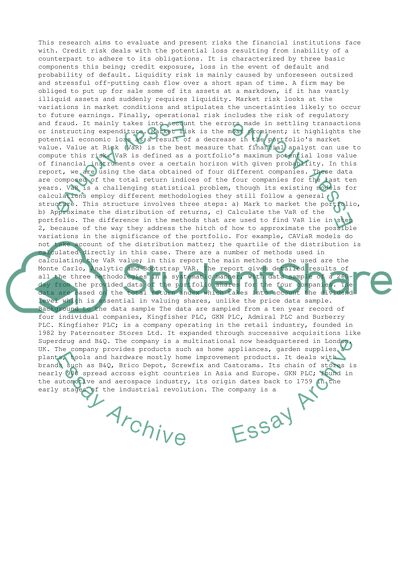Cite this document
(“Value at Risk (VAR) of a portfolio of 4 shares Assignment”, n.d.)
Retrieved from https://studentshare.org/business/1394277-value-at-risk-var-of-a-portfolio-of-4-shares
Retrieved from https://studentshare.org/business/1394277-value-at-risk-var-of-a-portfolio-of-4-shares
(Value at Risk (VAR) of a Portfolio of 4 Shares Assignment)
https://studentshare.org/business/1394277-value-at-risk-var-of-a-portfolio-of-4-shares.
https://studentshare.org/business/1394277-value-at-risk-var-of-a-portfolio-of-4-shares.
“Value at Risk (VAR) of a Portfolio of 4 Shares Assignment”, n.d. https://studentshare.org/business/1394277-value-at-risk-var-of-a-portfolio-of-4-shares.


